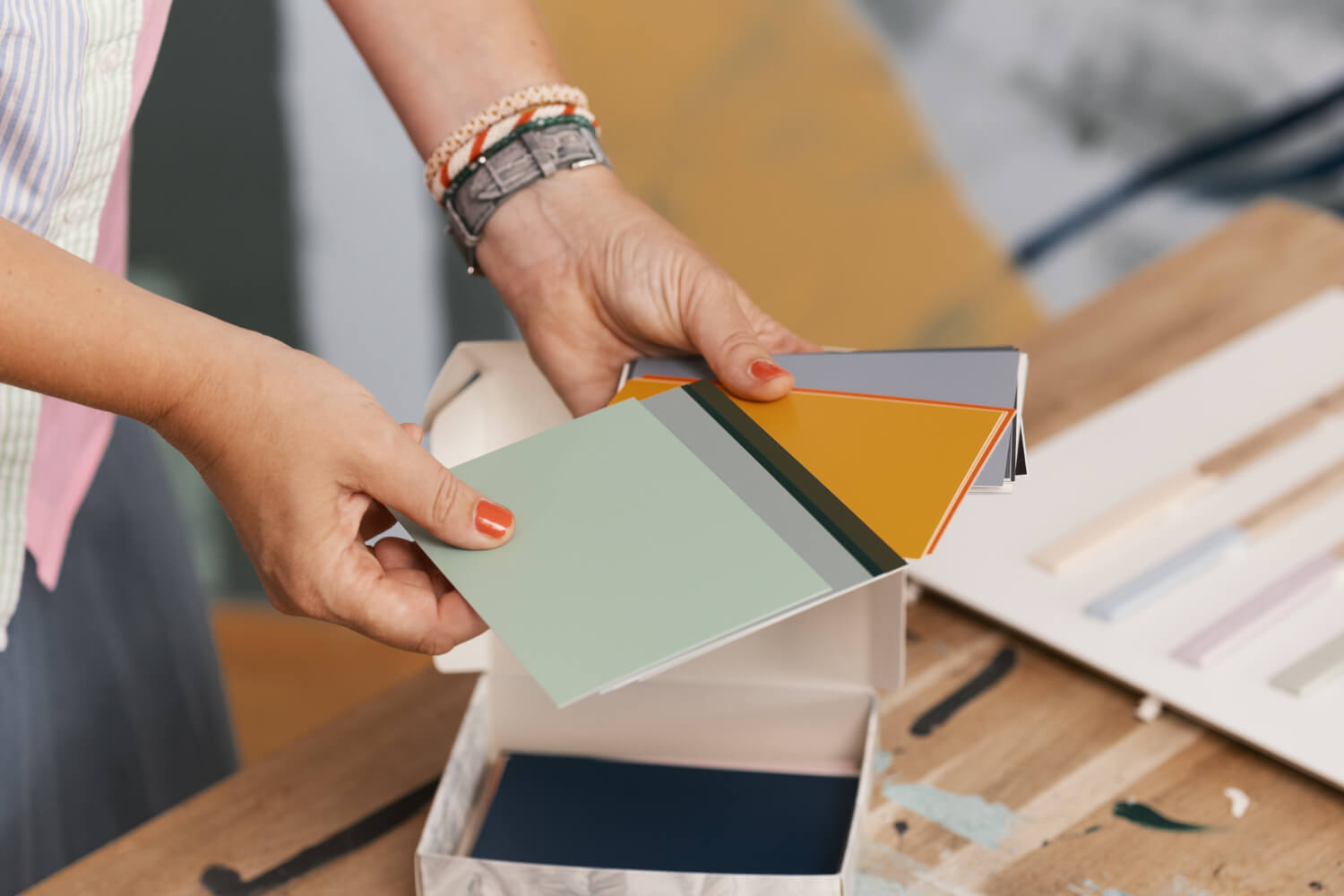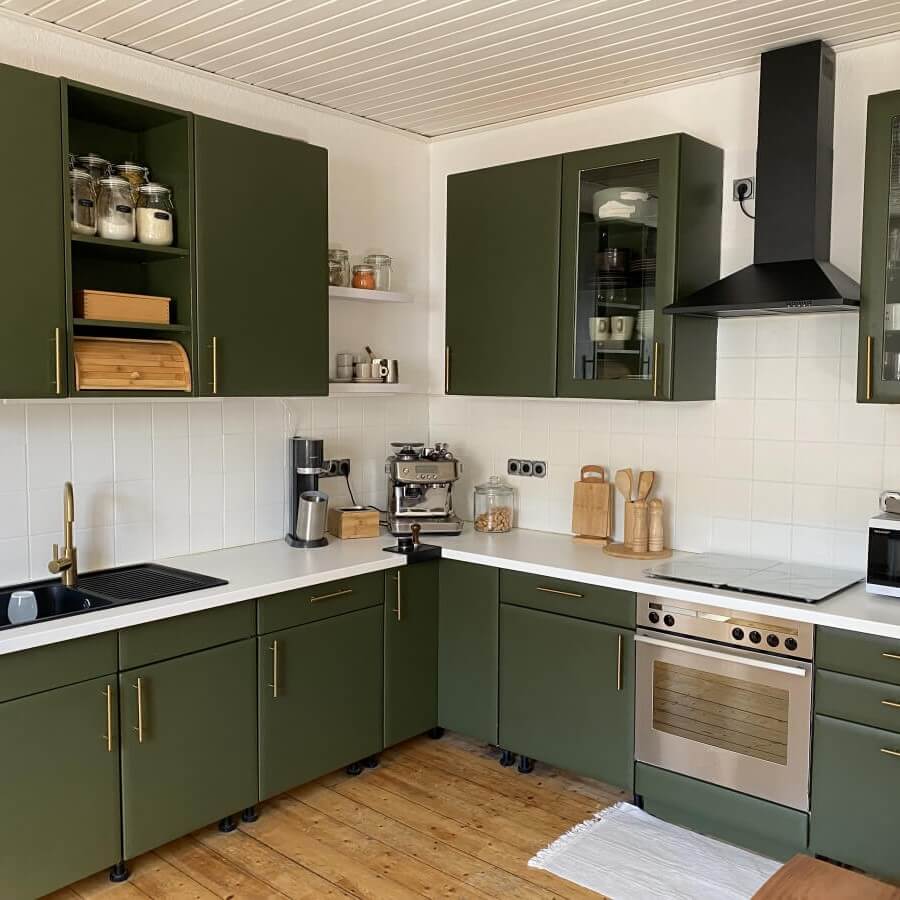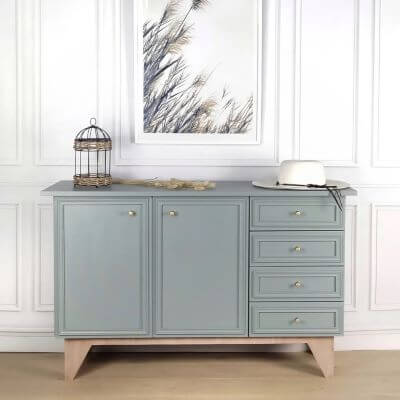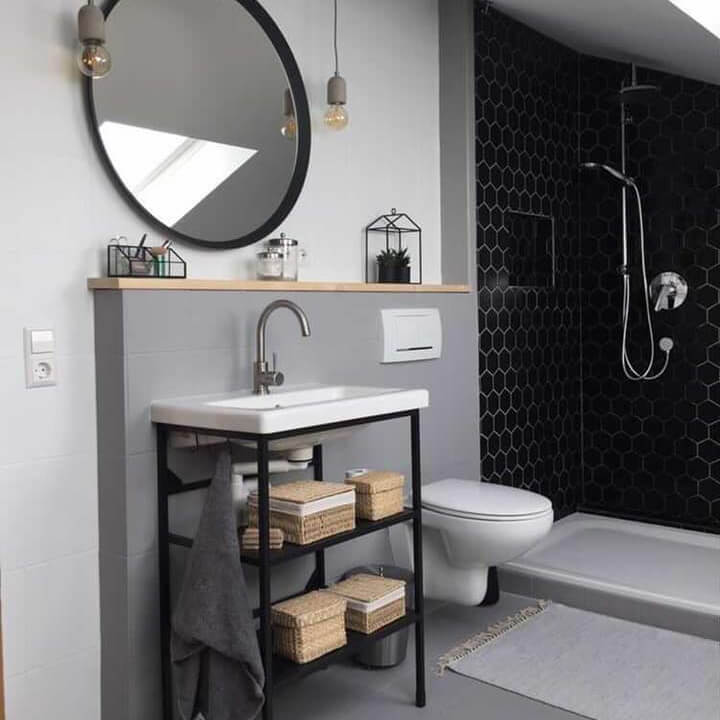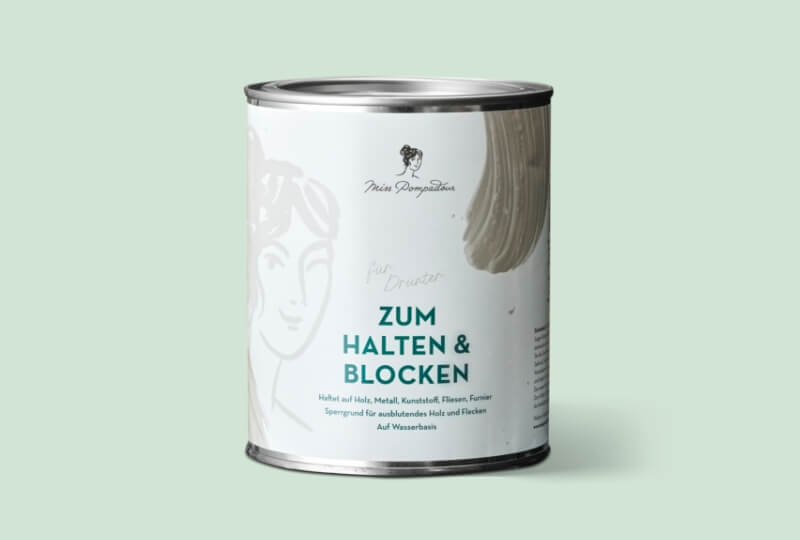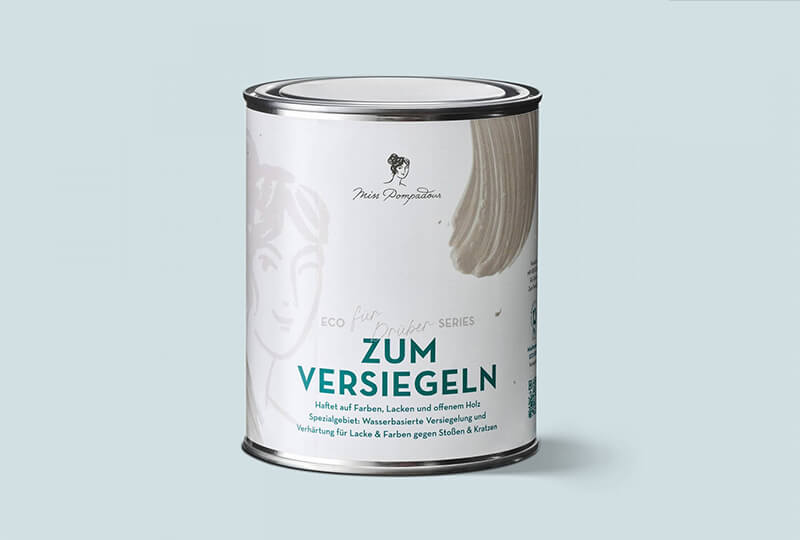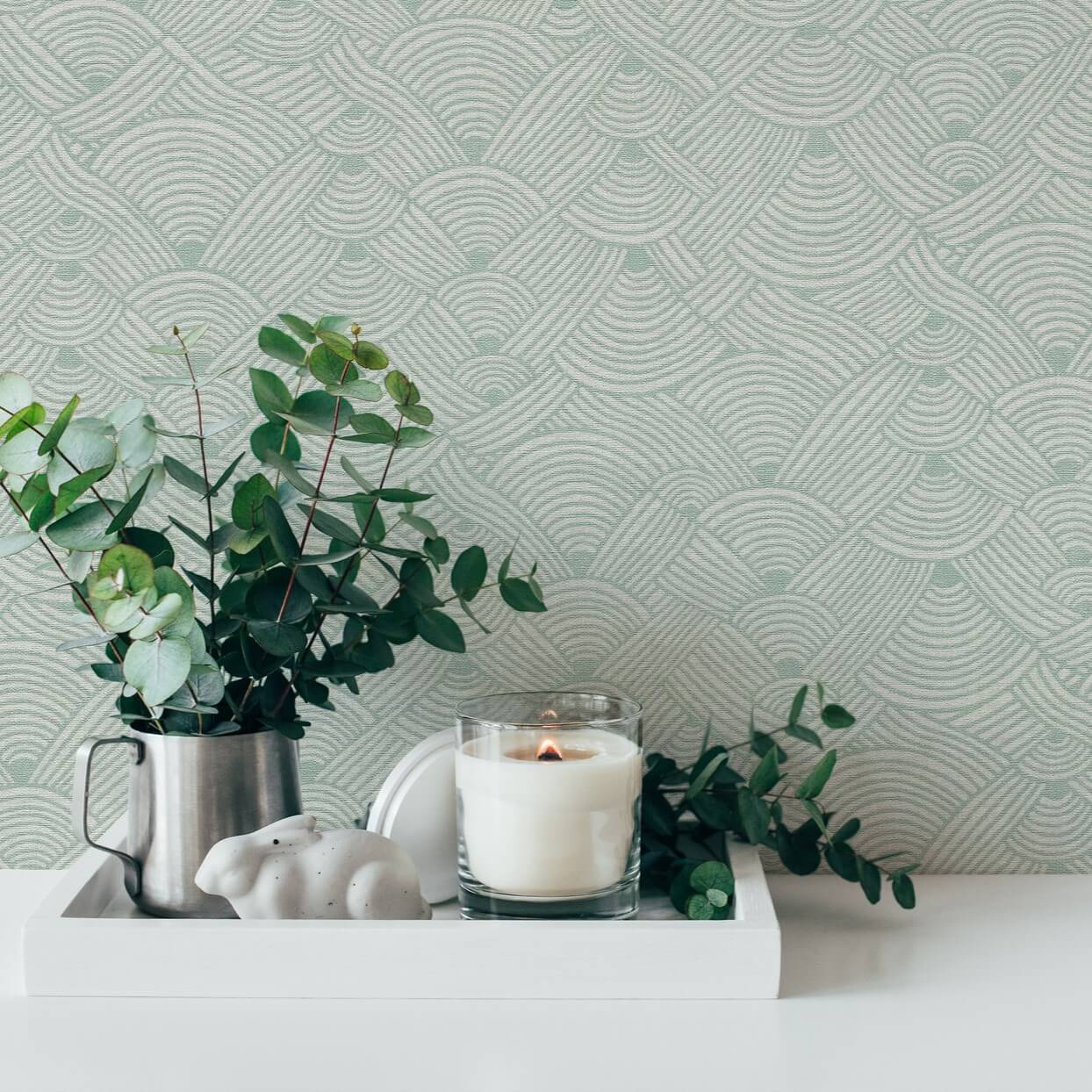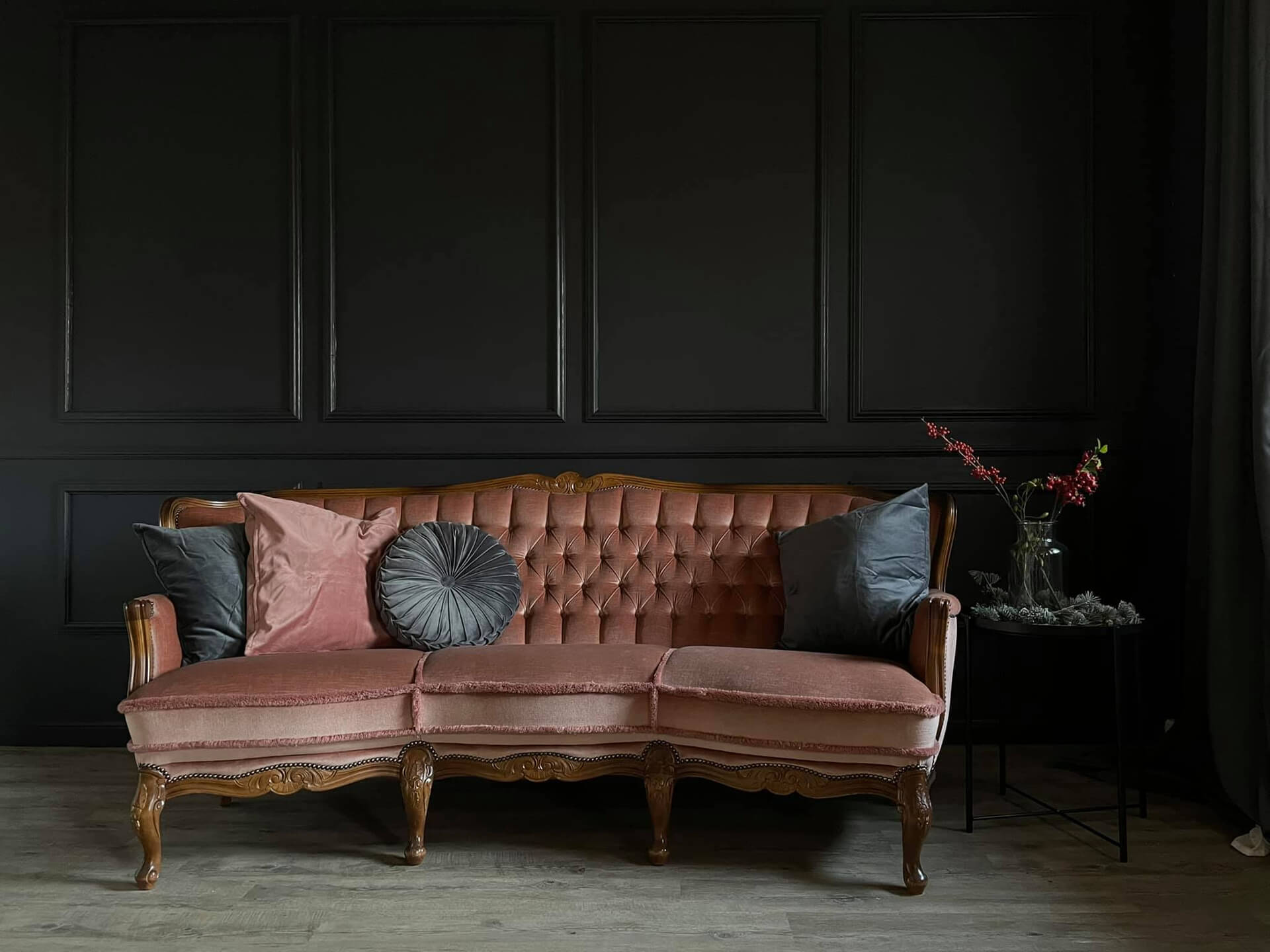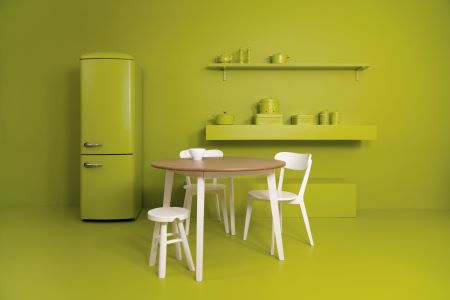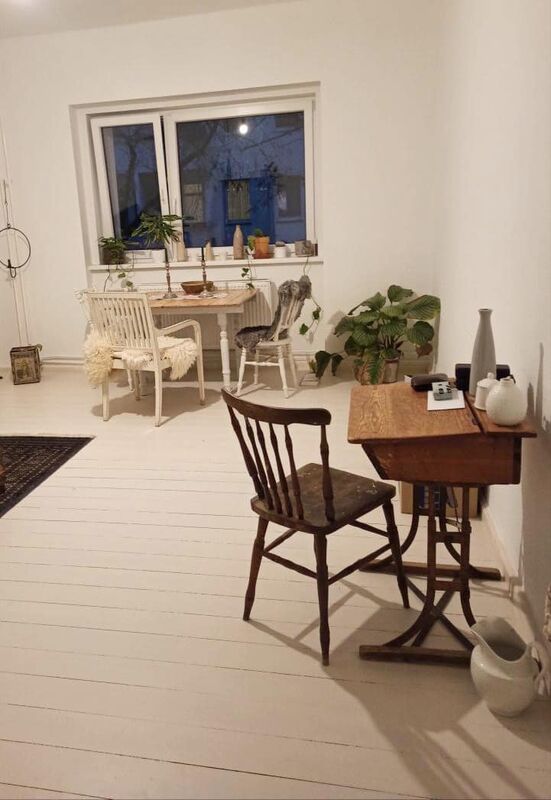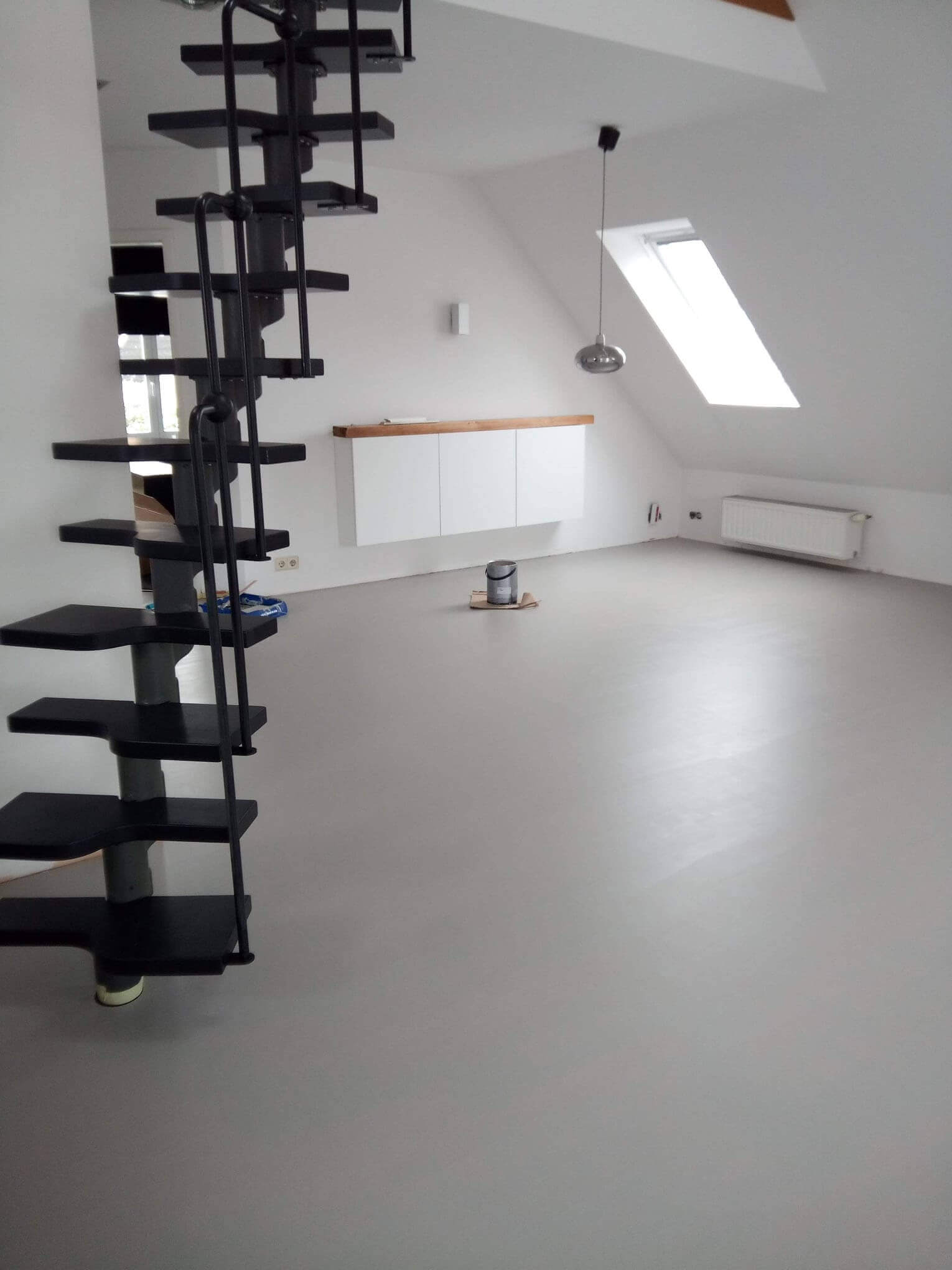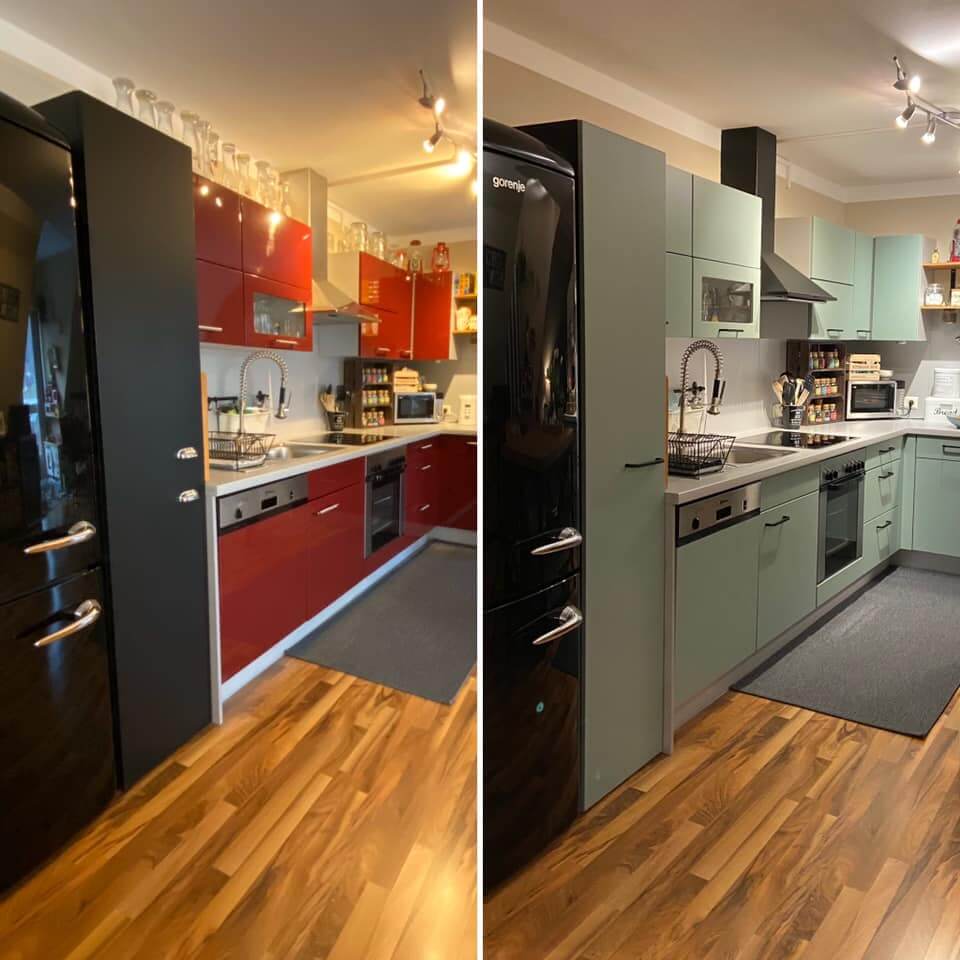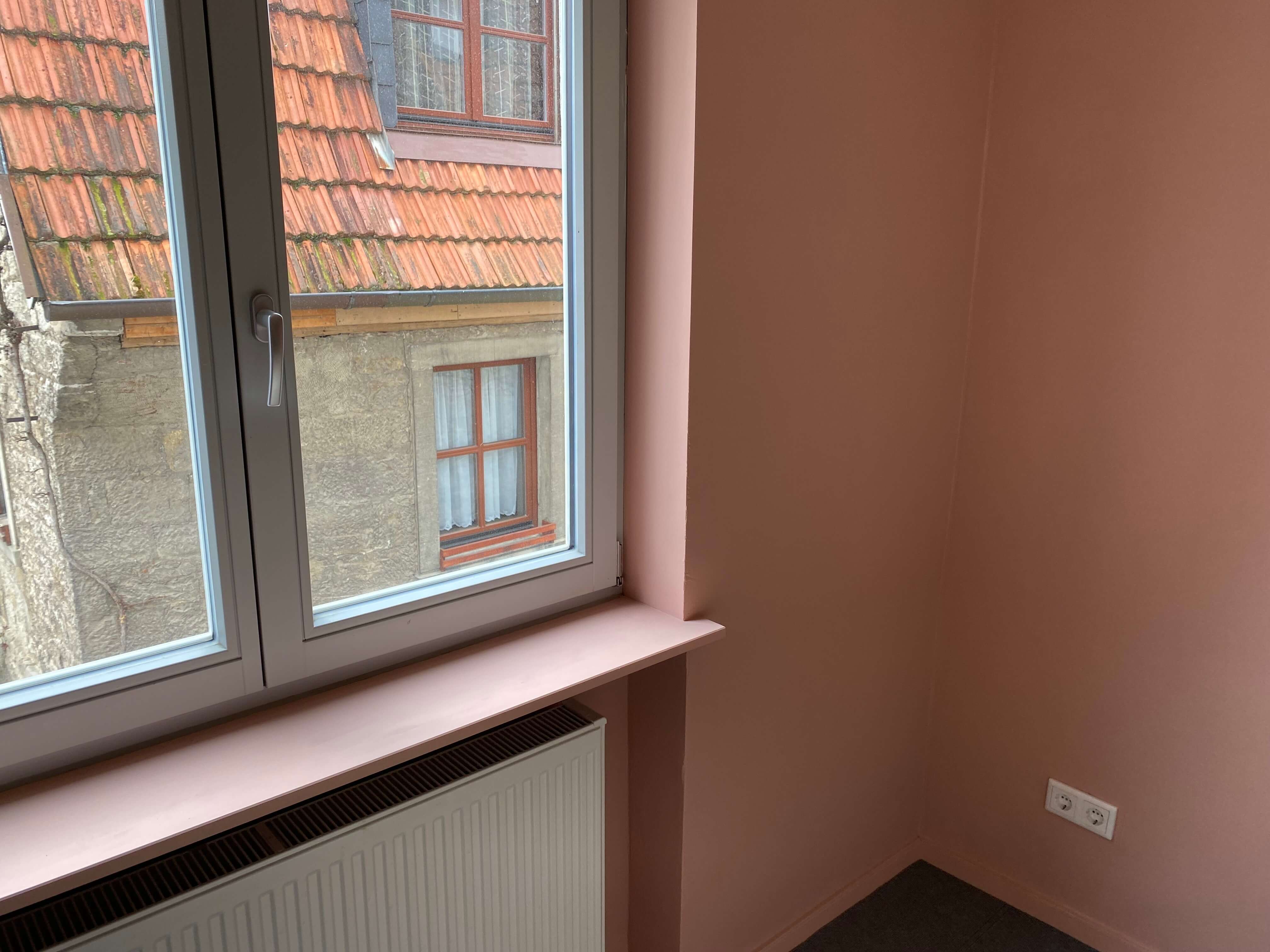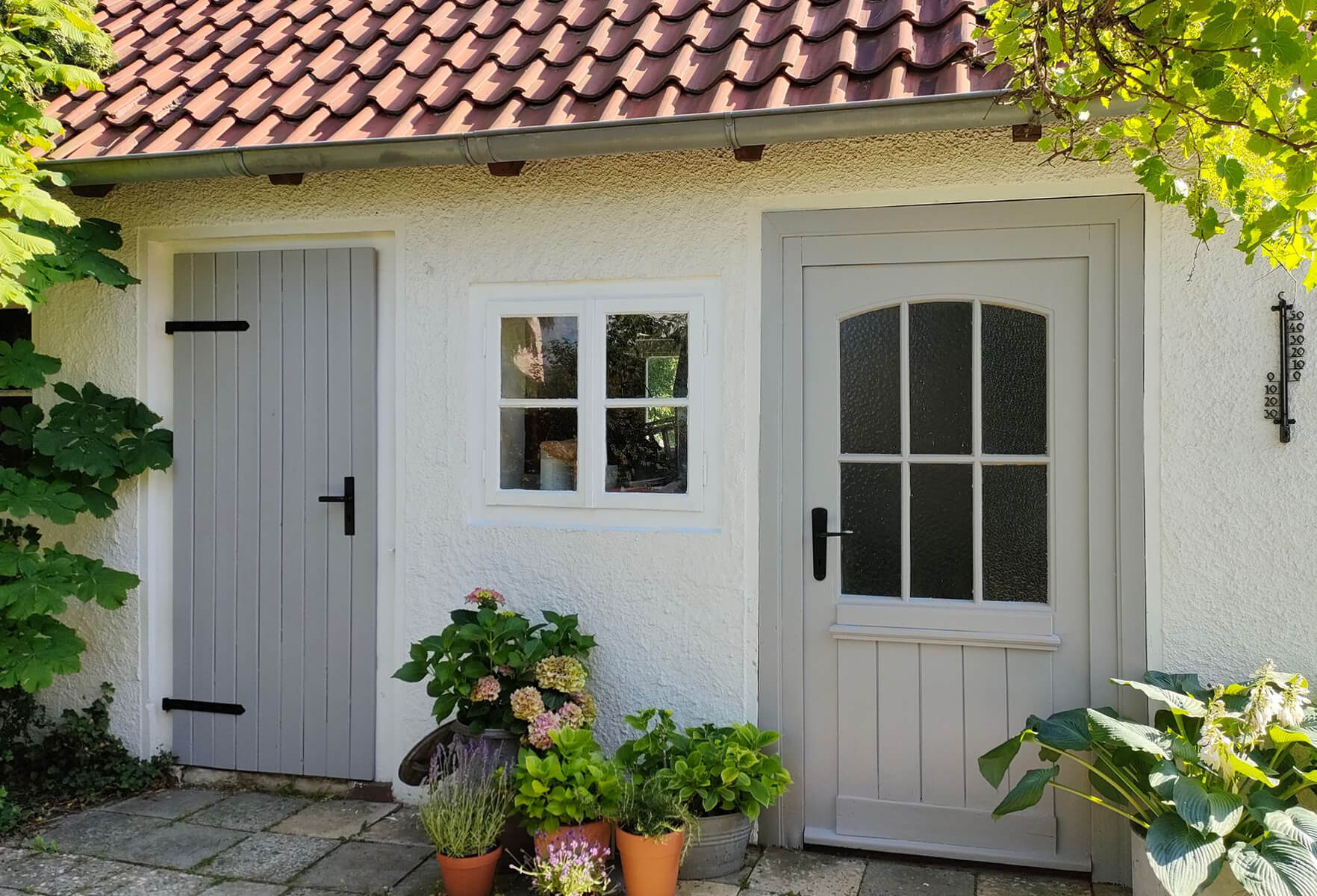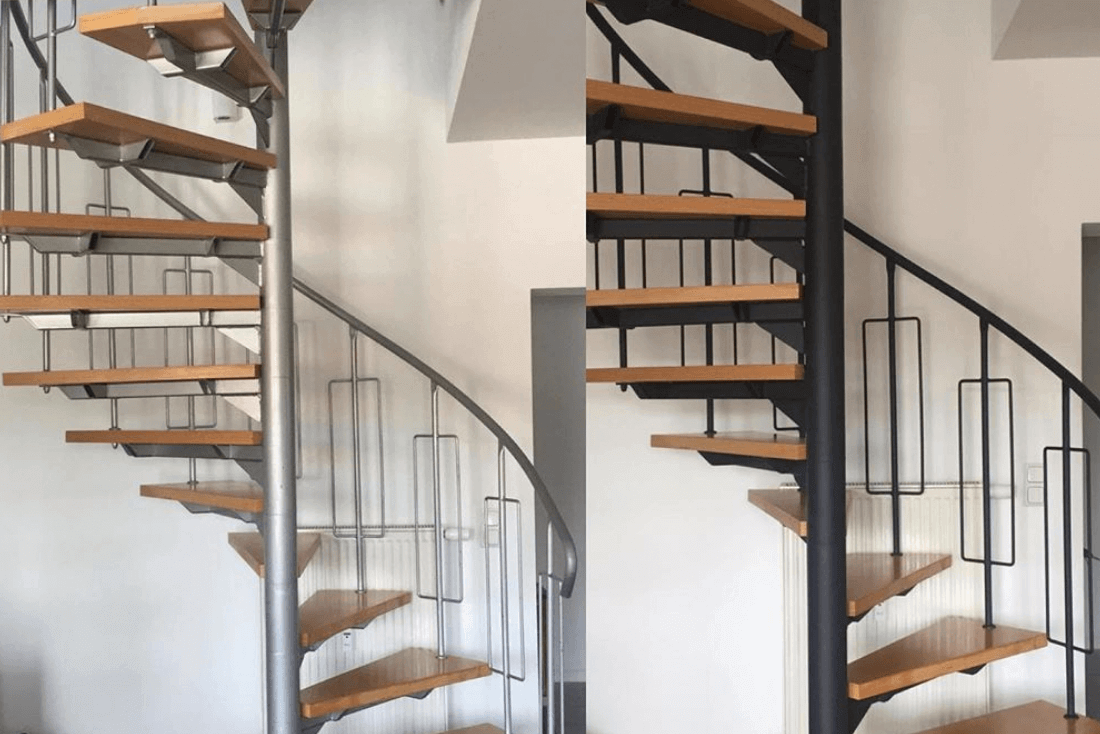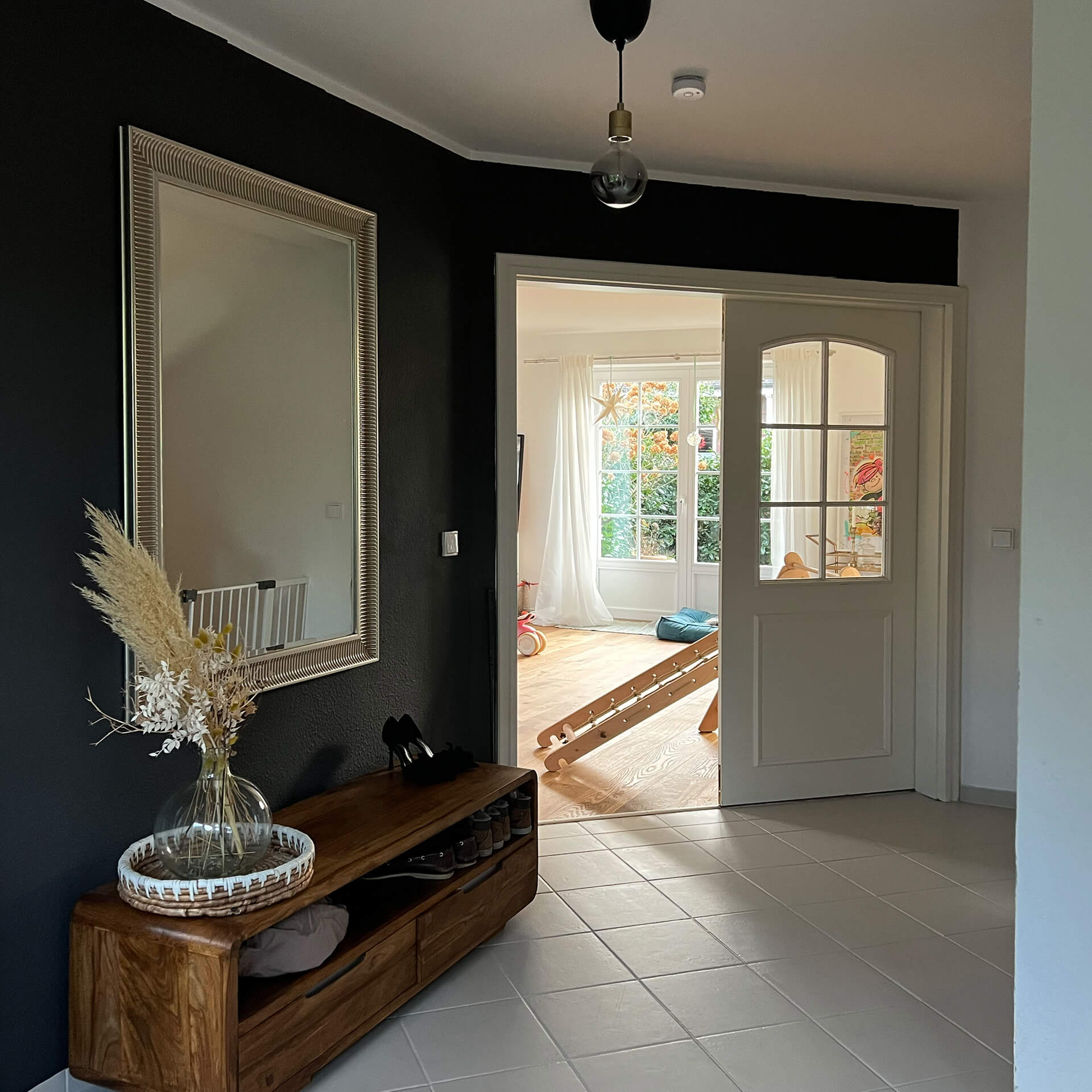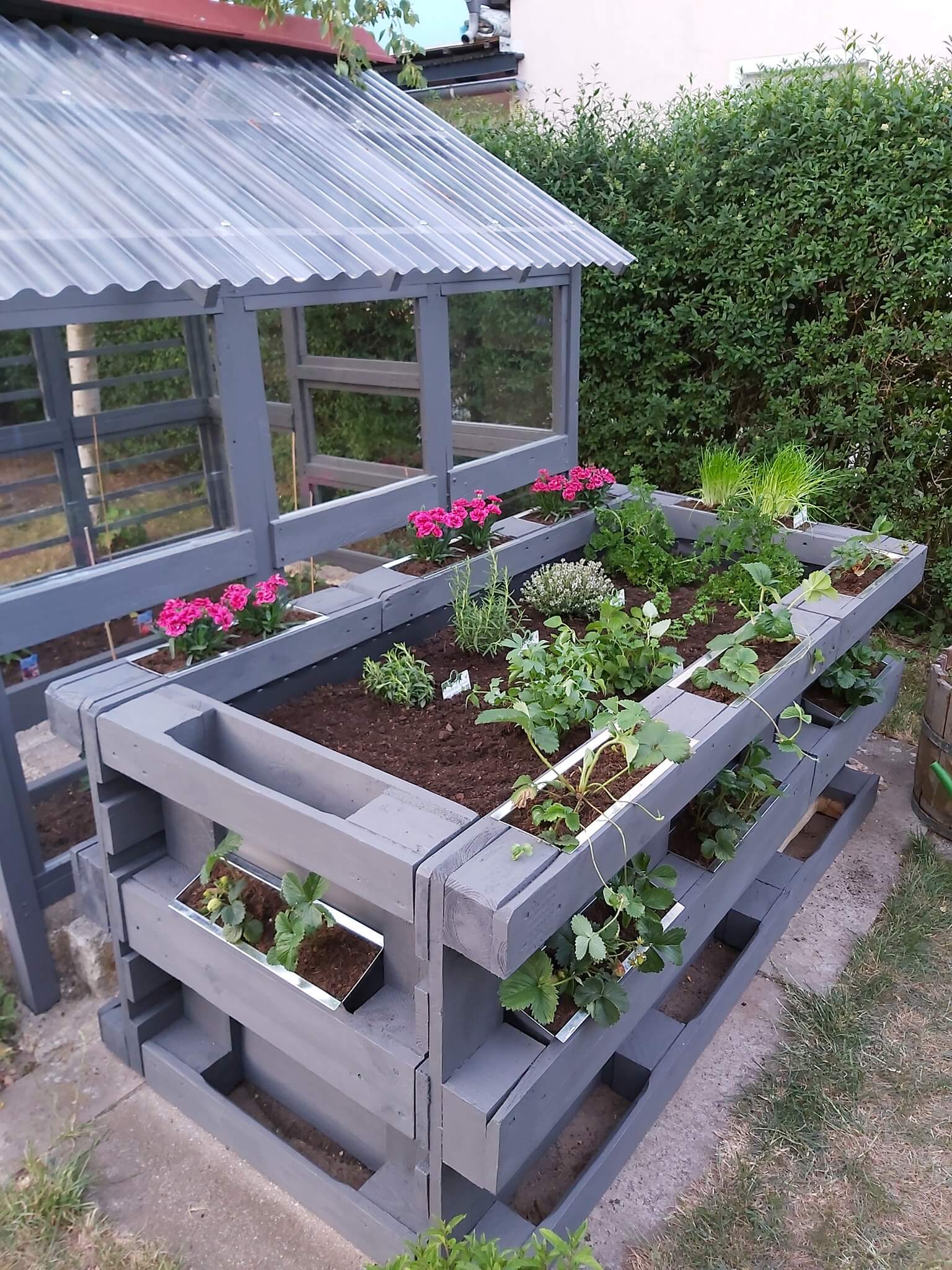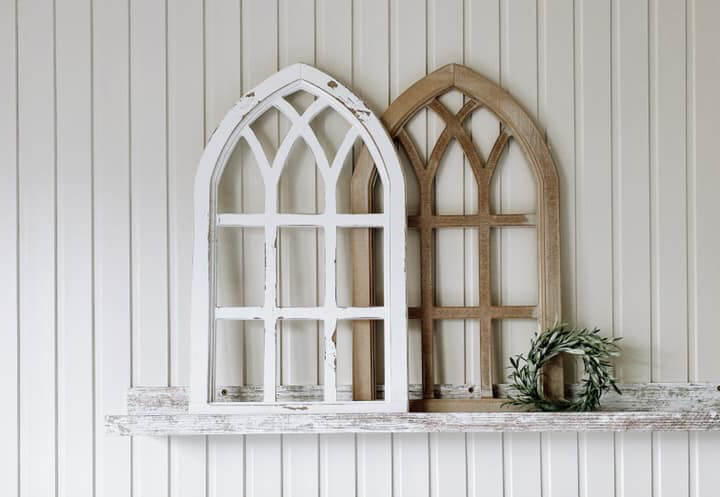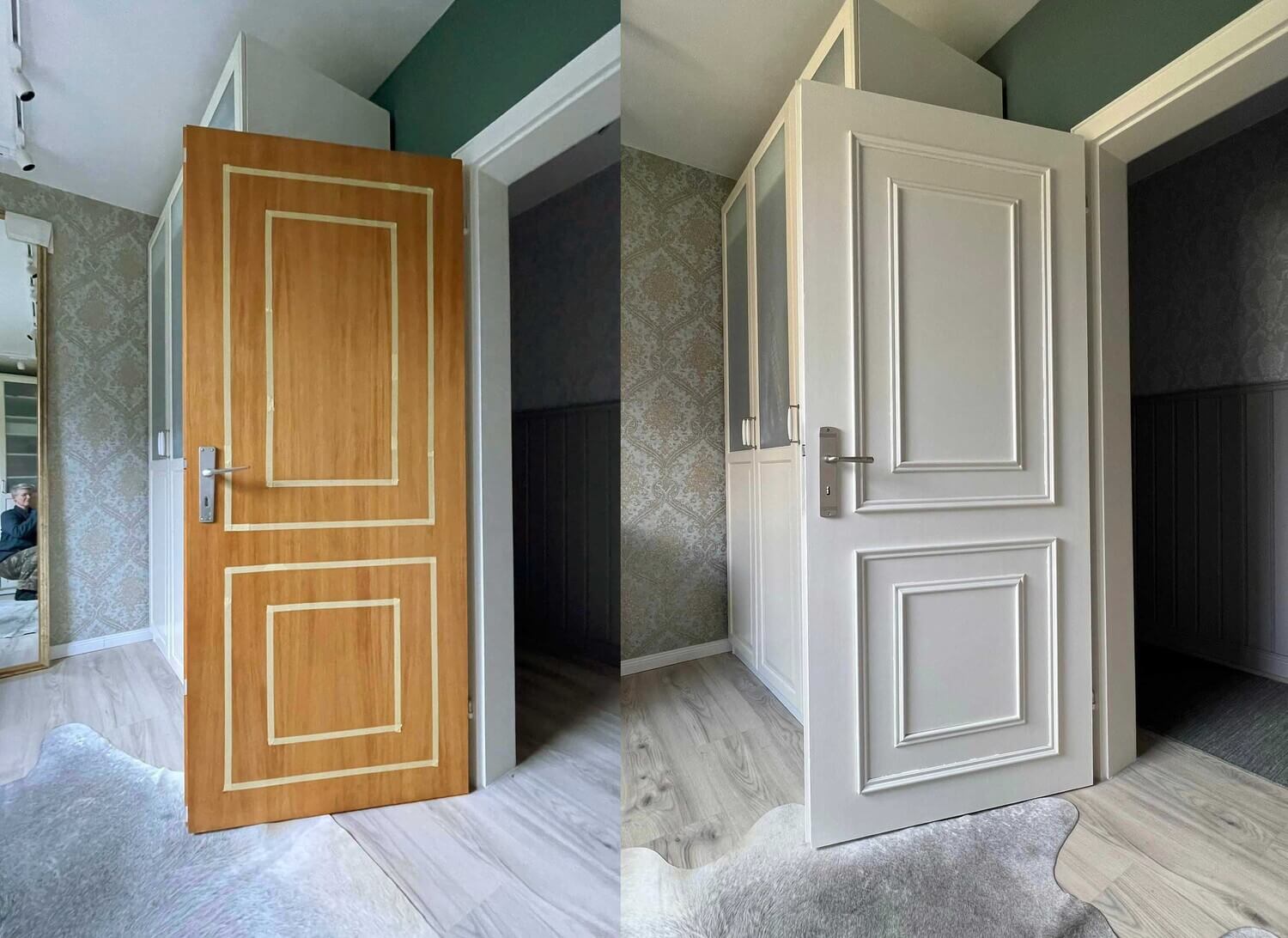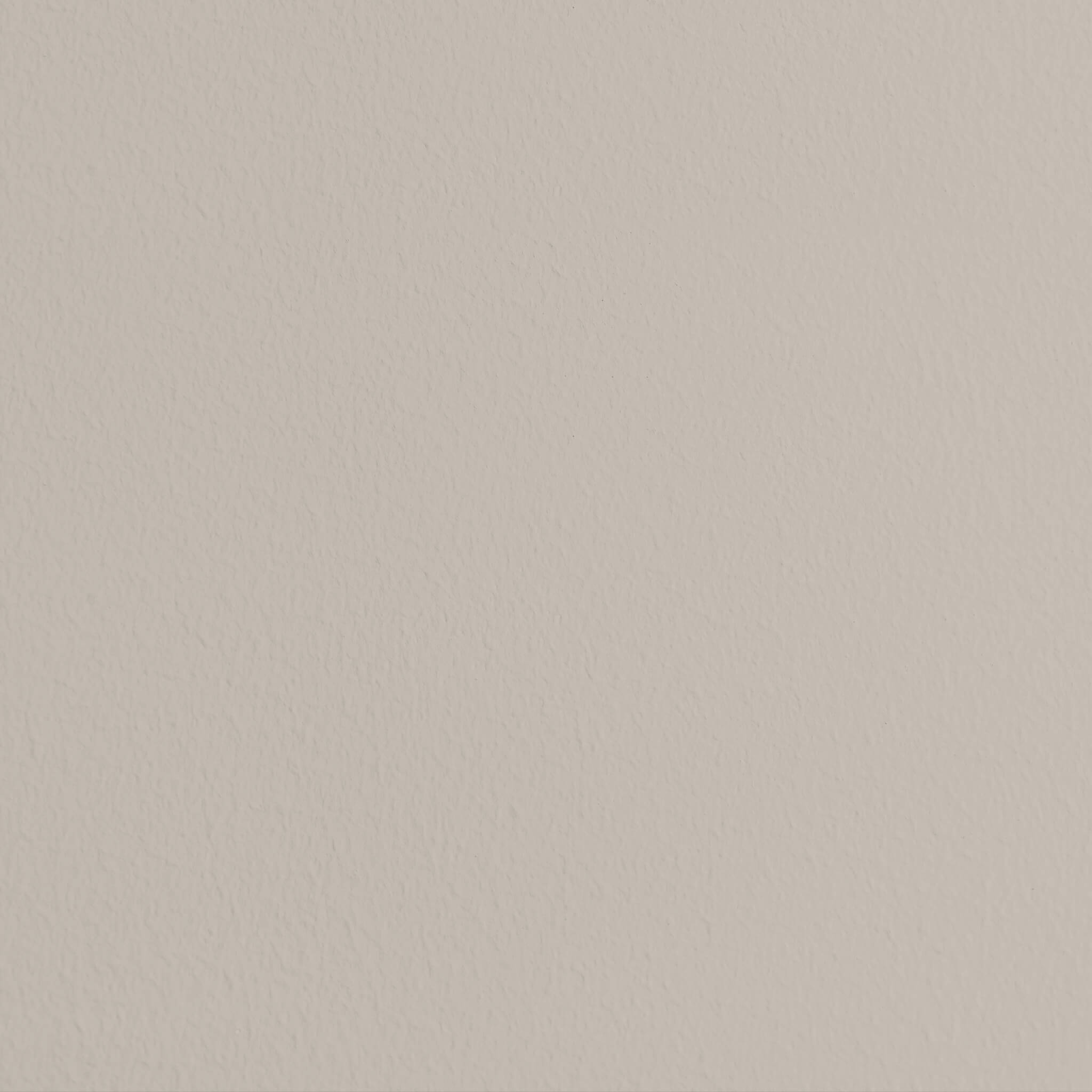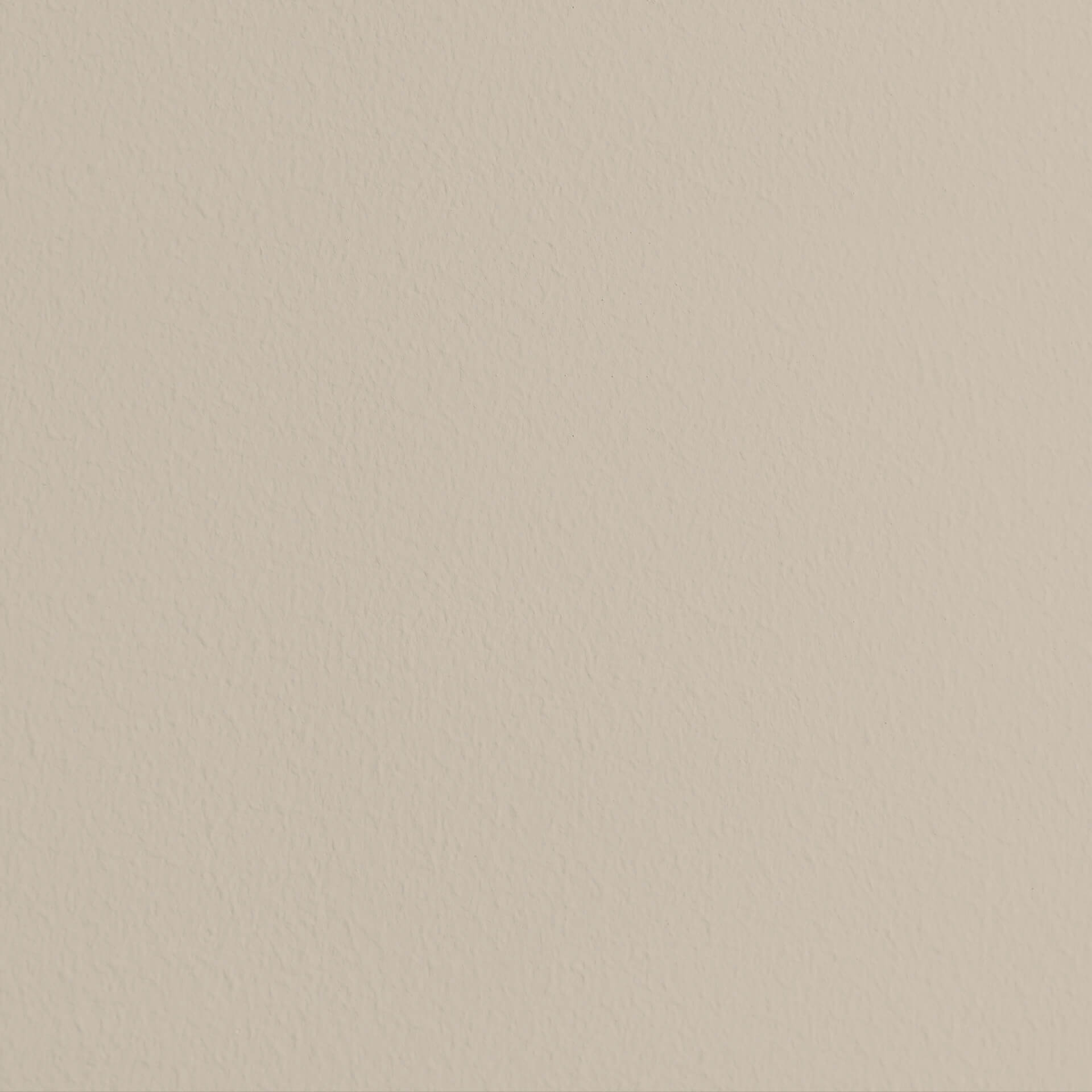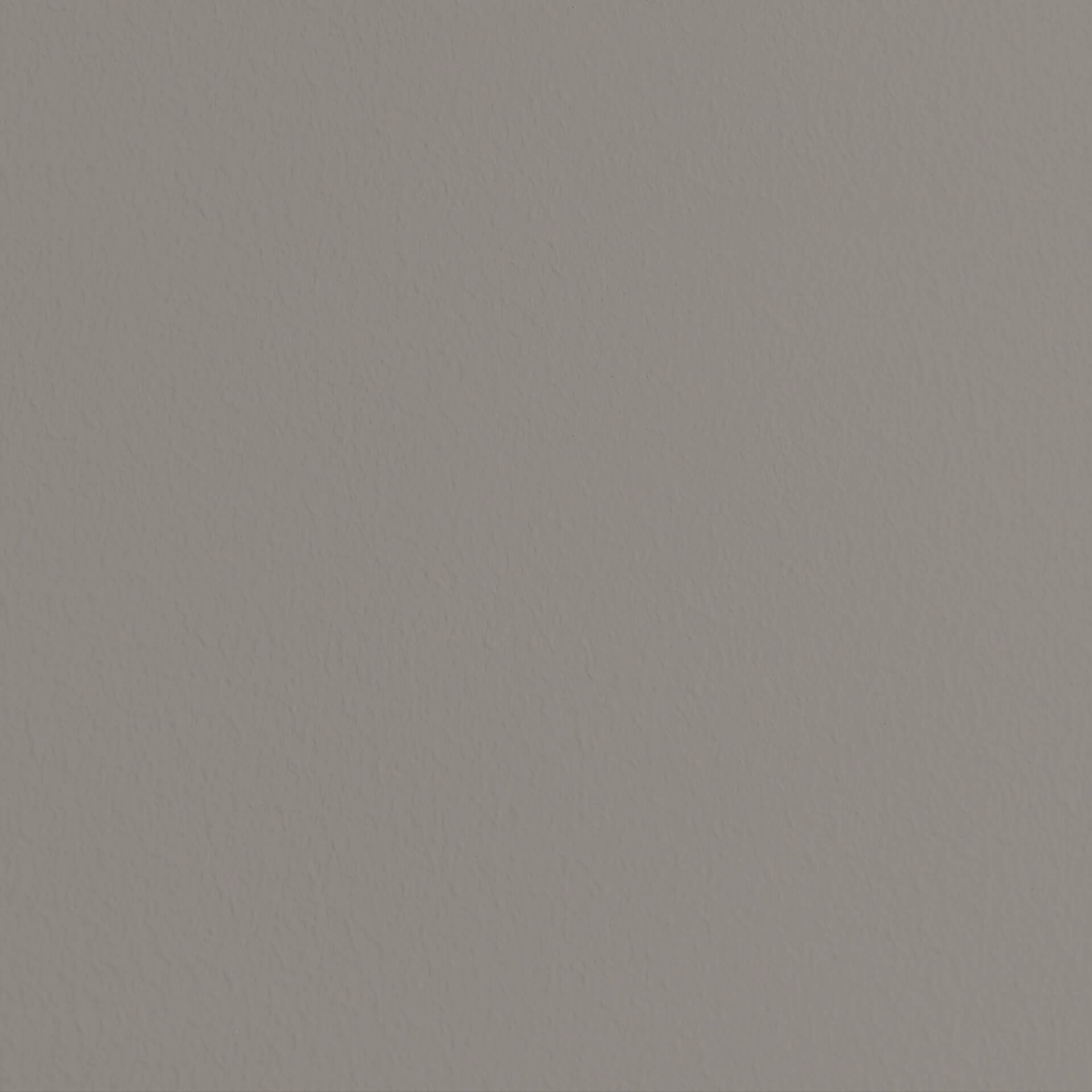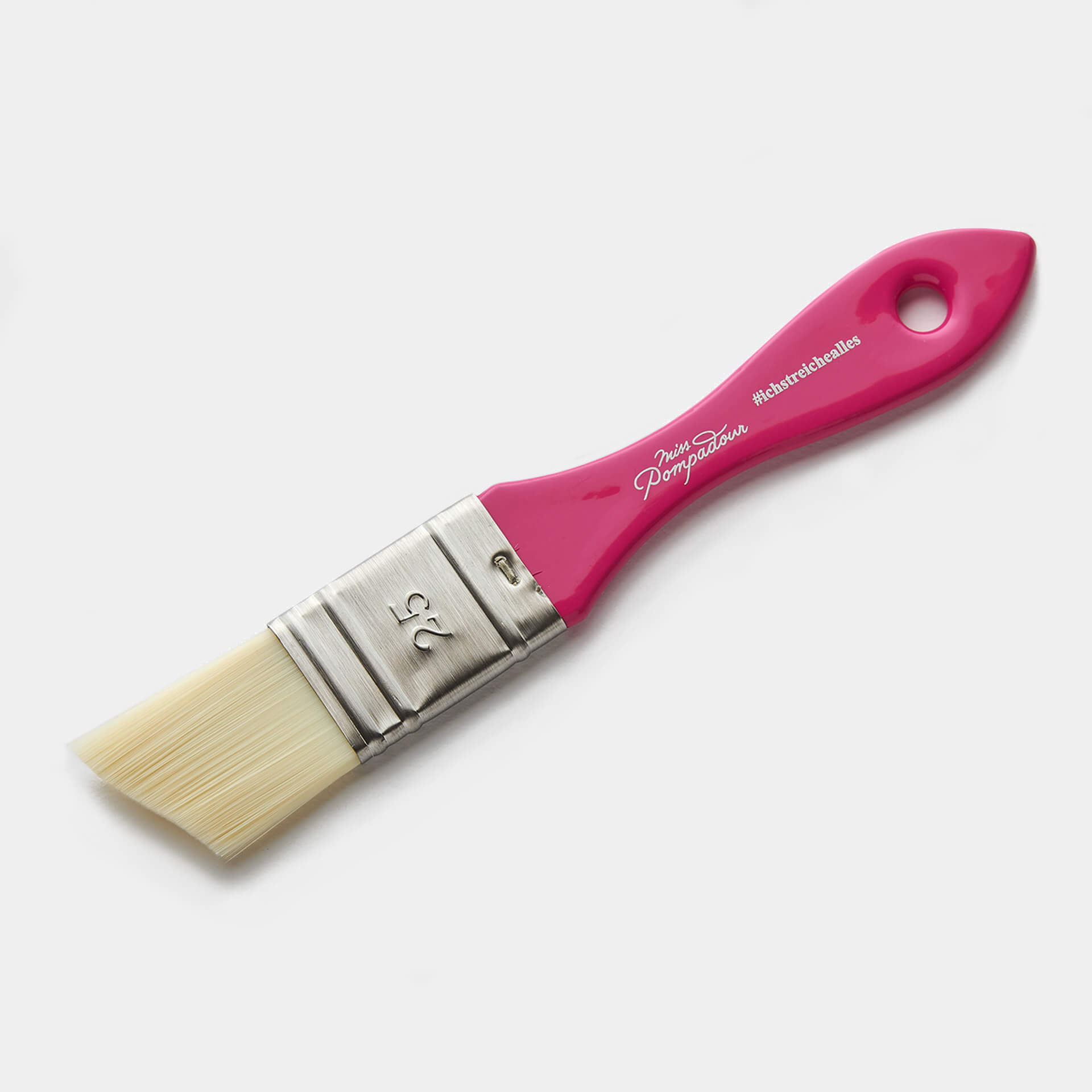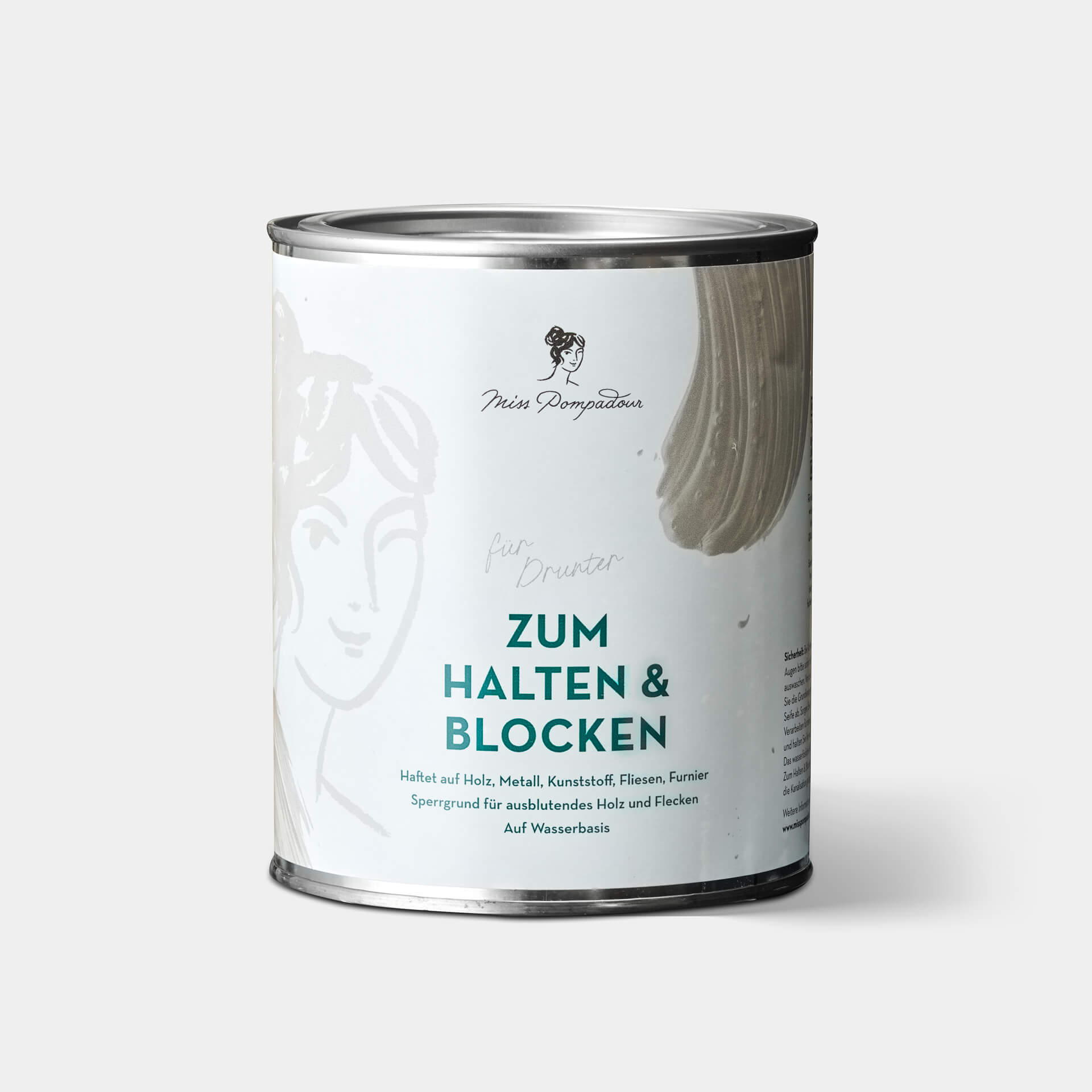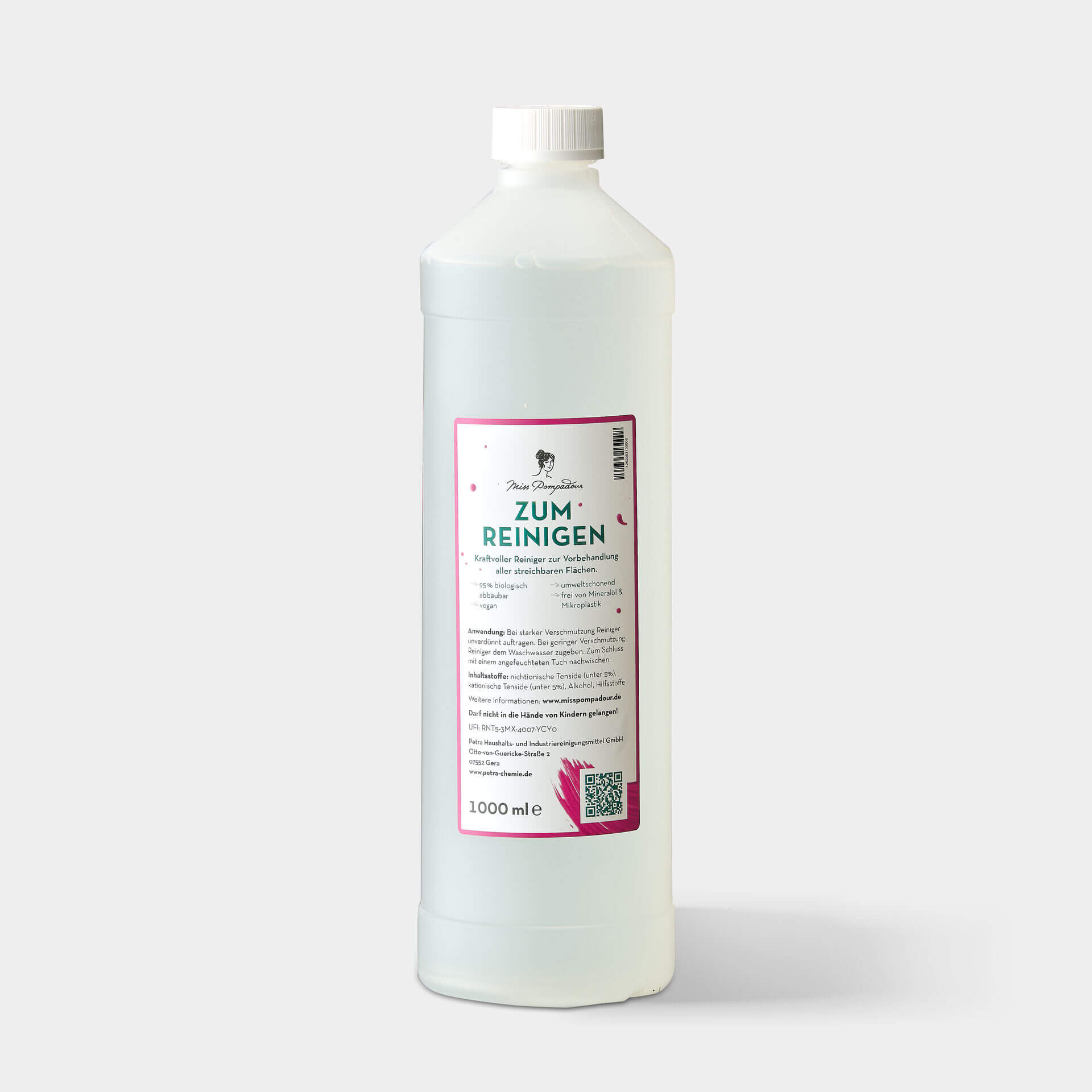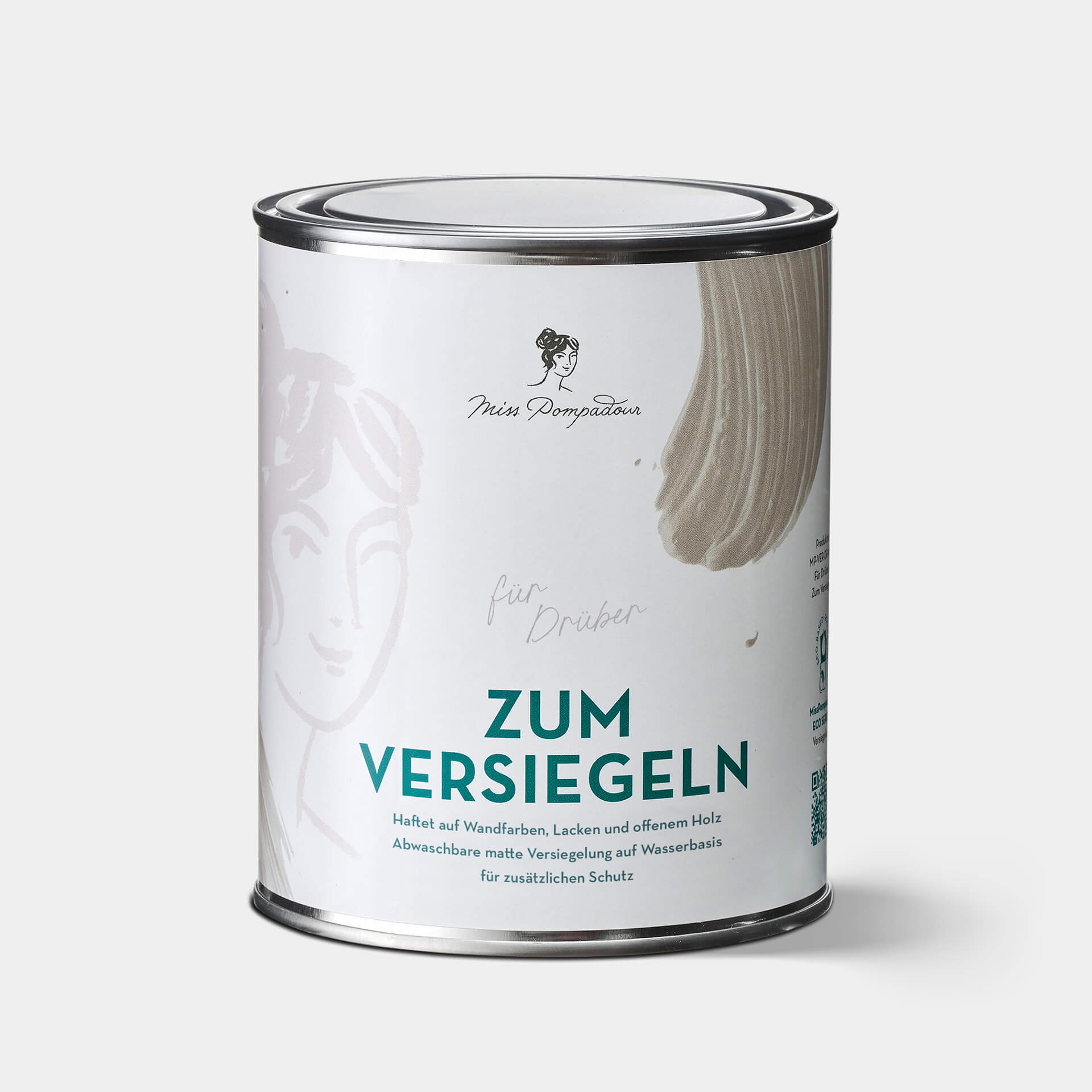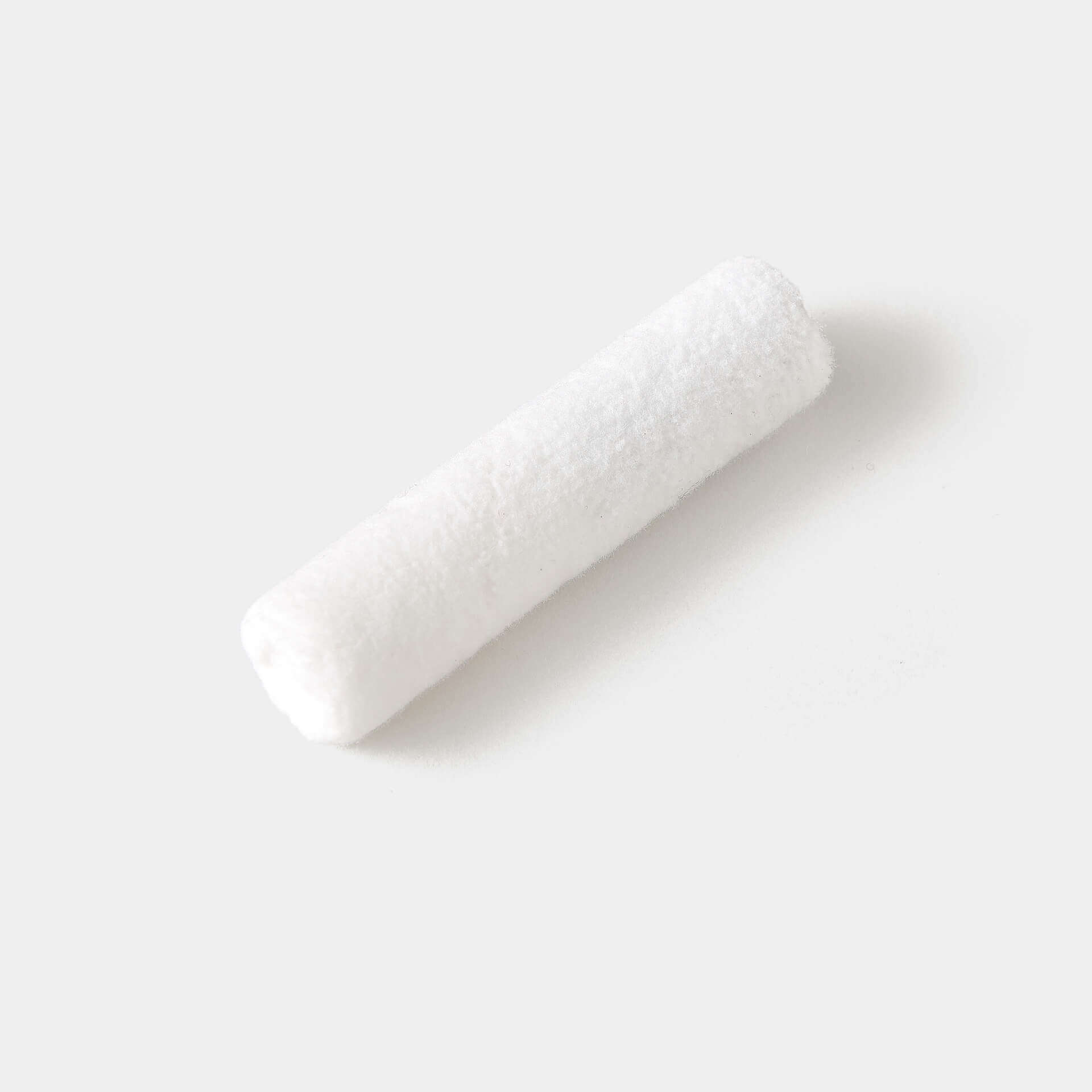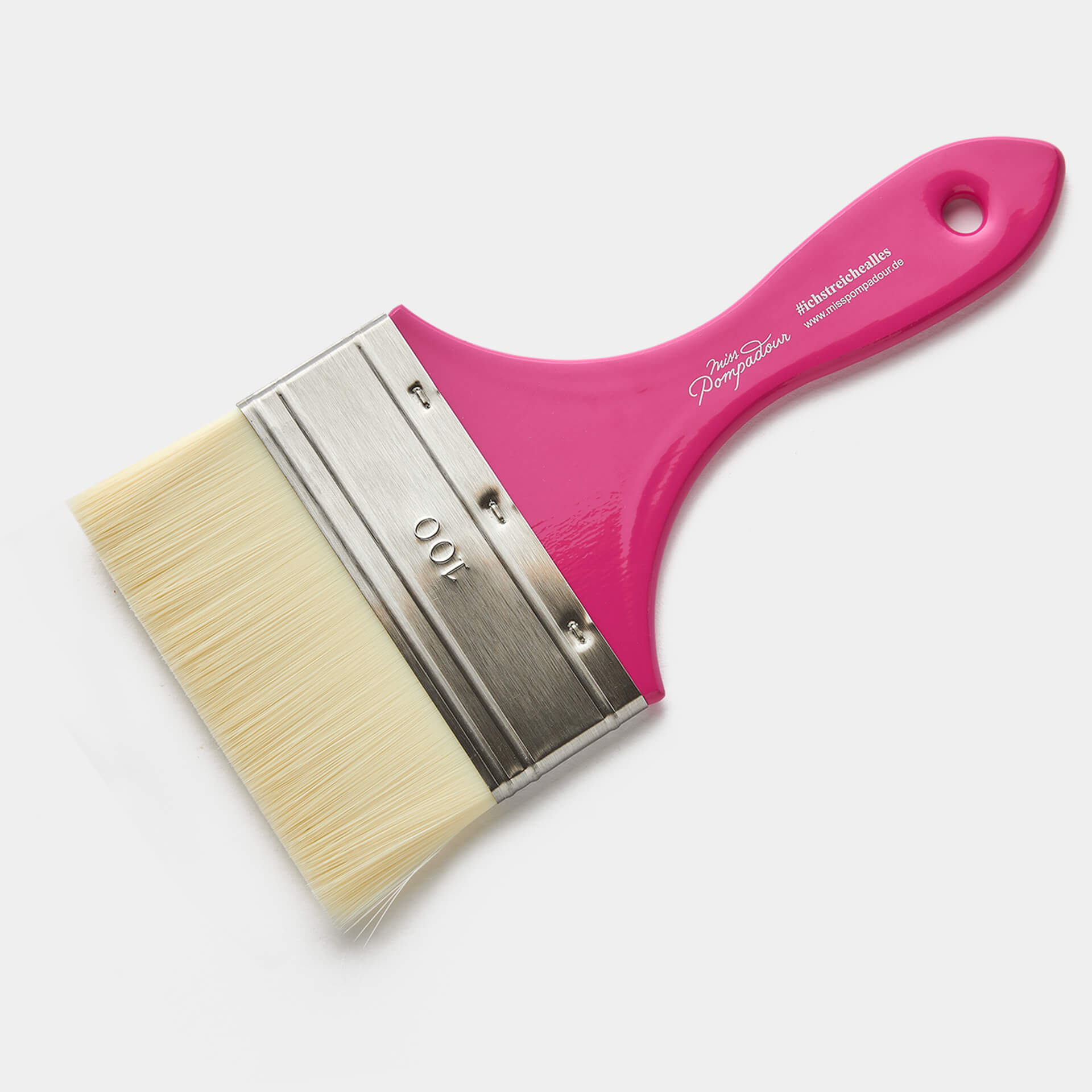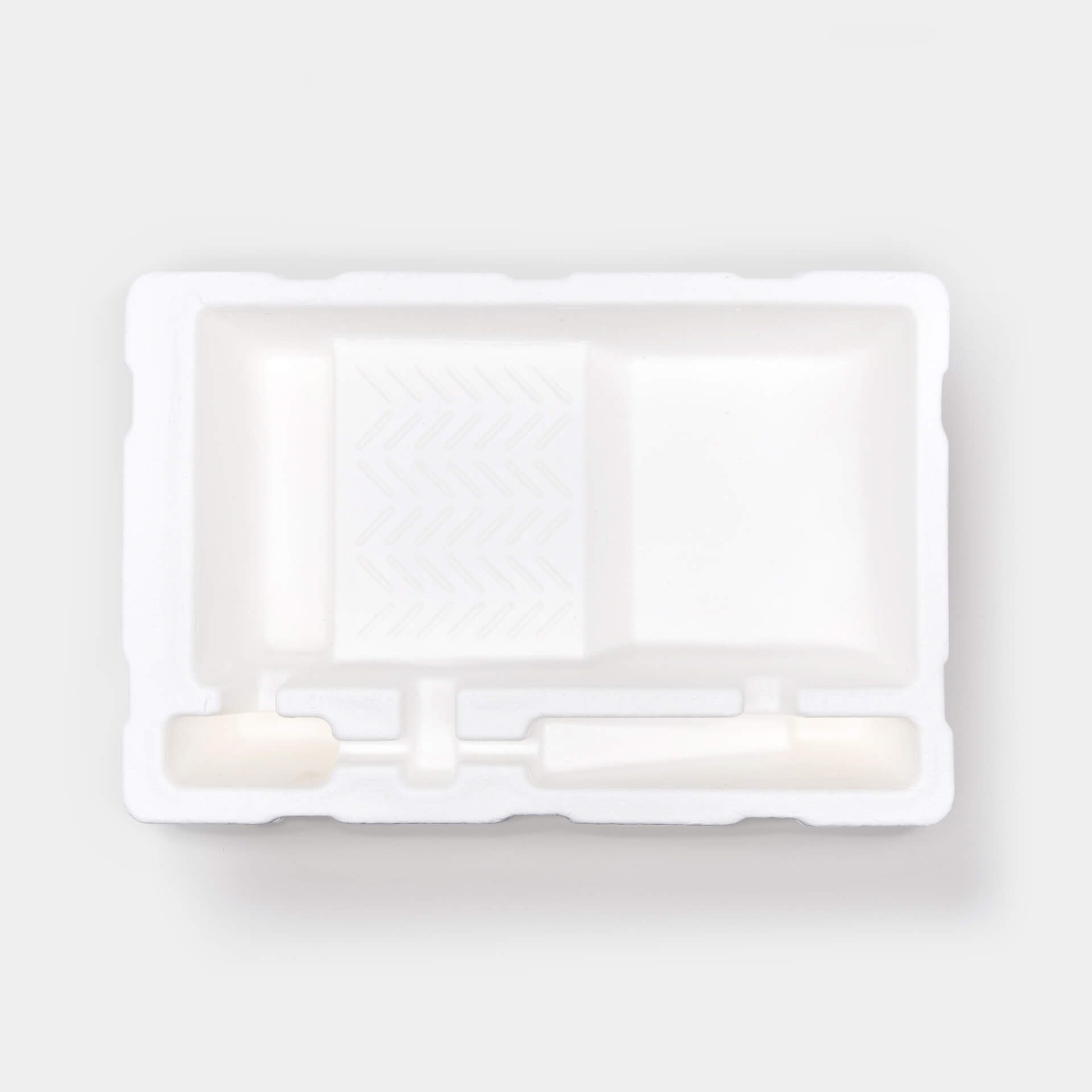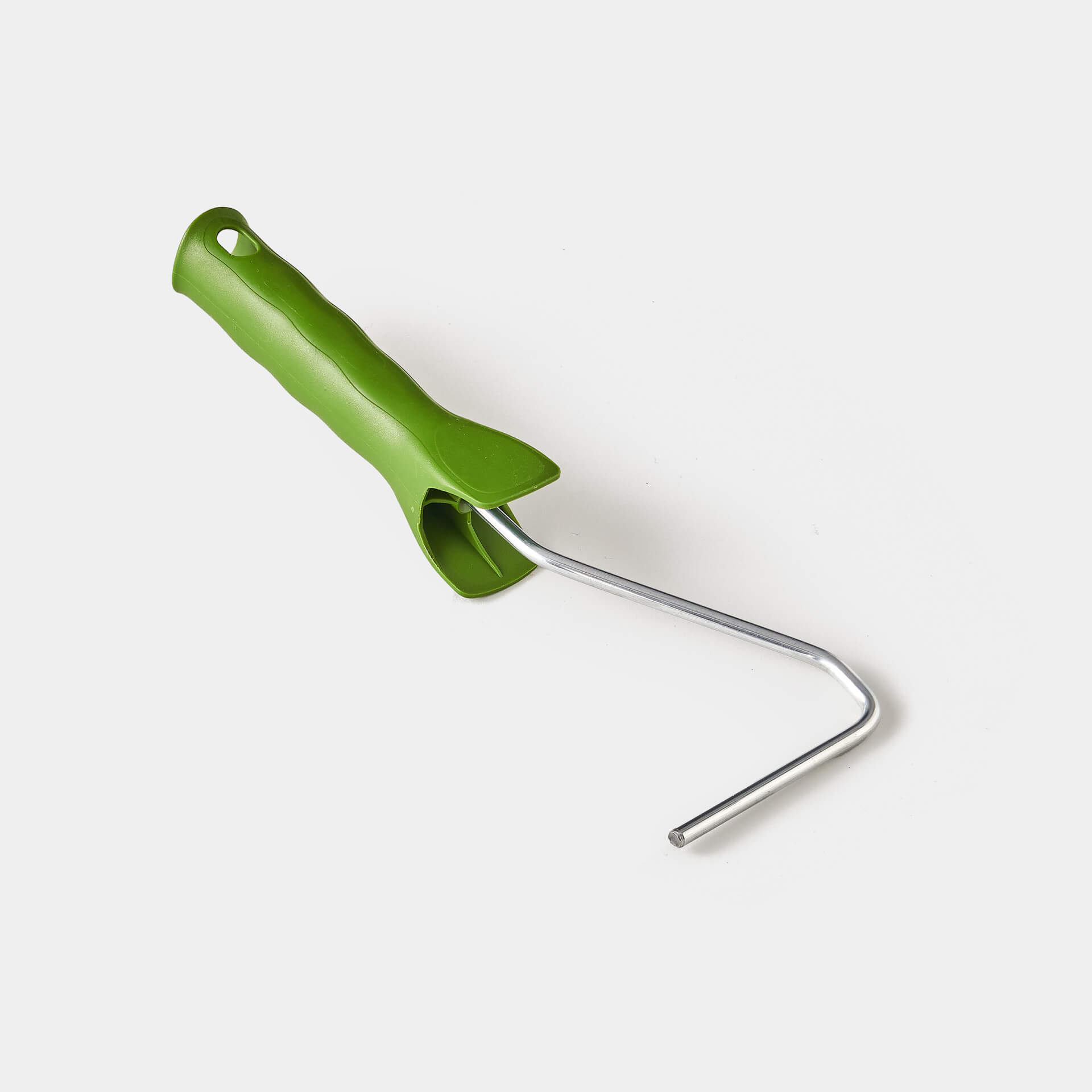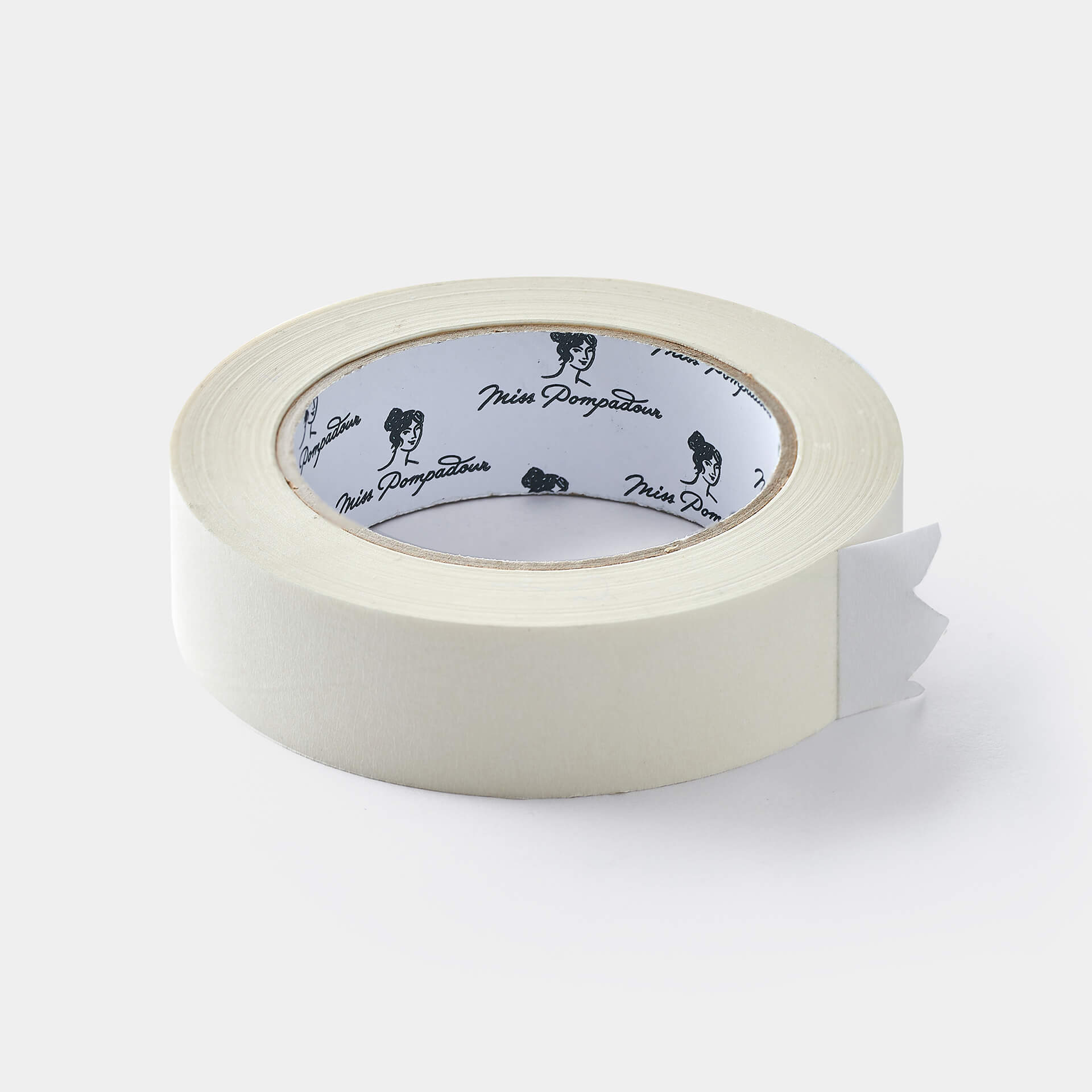Painting Your Floor with Chalk Paint. This is How it Works!
13 min reading time
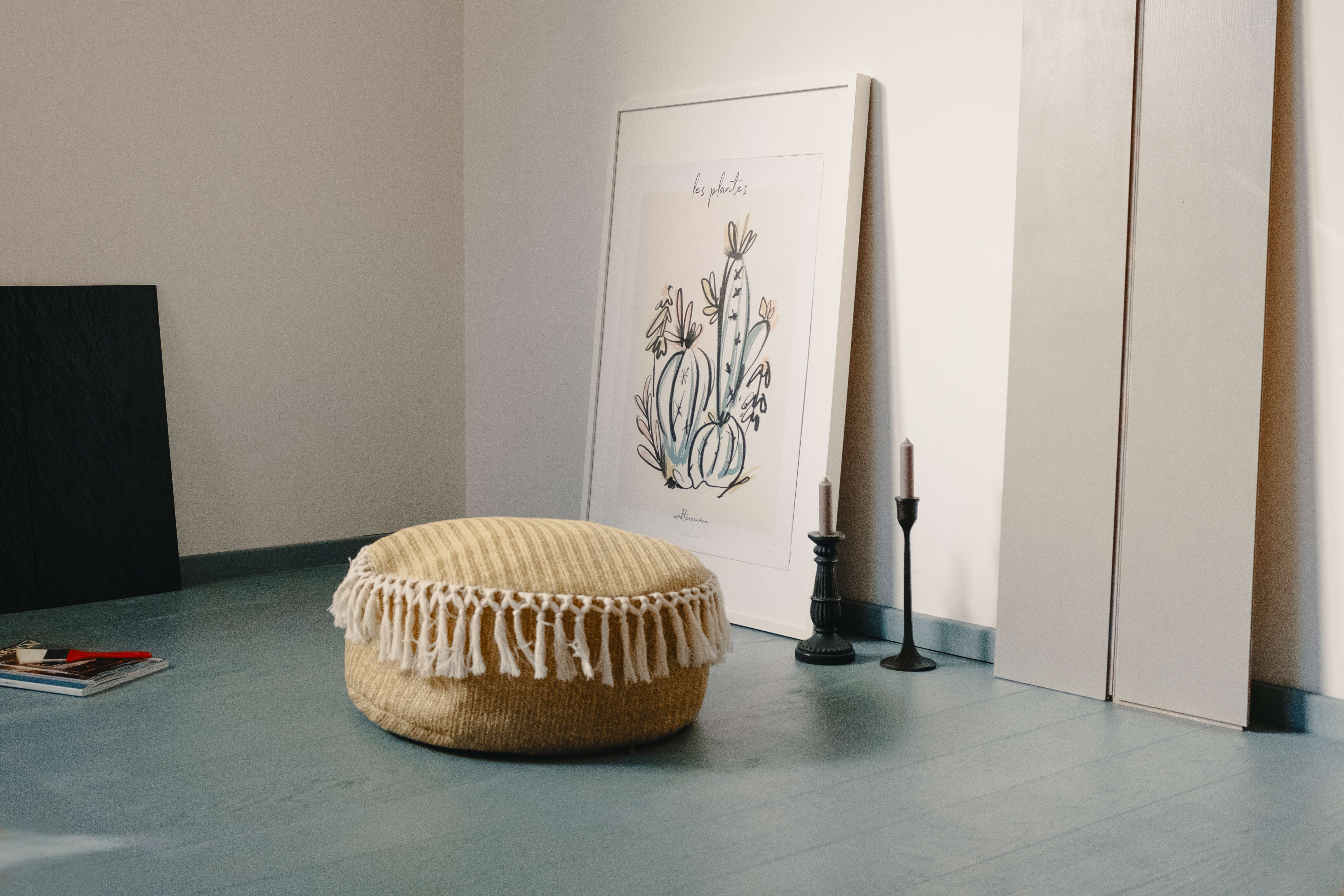
When you move into an older house, you are often faced with a wide variety of floor coverings, some of which are no longer attractive. If the budget doesn't allow for a complete renovation, simply repaint everything in your favourite colour. You can transform many floor coverings to match your style. Below, we explain what you need to look out for.
Table of contents
1 . Paint the floor: DIY ideas from our community
2 . Which floors can I paint at all?
3 . Which paint is suitable for floors?
4 . Instructions: 6 steps to the perfect result
5 . FAQ: Frequently asked questions about painting floors
6 . Video: Painting floors
7 . These are the products you need for your DIY project
Paint the floor: DIY ideas from our community
Why should you paint your floor? Because you can give your old floor a new shine with comparatively little effort . Not every old floor has to be torn out and replaced immediately, because with a coat of paint it can be prepared for the next few years and look great again . This is a good way to bridge the gap until you have to replace the entire floor . Take a look at how our customers have already beautified their floors with our floor paint and let yourself be inspired!
Which floors can I paint at all?
Depending on the material, many floors can be painted very well. Of course, there are a few things to bear in mind.
- Painting wooden floors such as parquet and floorboards is quite straightforward. If you want to paint with a light colour shade, you may need to prime with Stainblock, depending on the condition of the floor. You can see the exact procedure below in the instructions.
- Plastic floors such as laminate, vinyl and PVC can usually be painted well. However, very new PVC floors often release plasticisers. These can cause the varnish not to cure properly. The only thing that helps is to try it out: simply paint an inconspicuous area and see if the paint hardens well.
- Tiled and stone floors, such as those found in the laundry room, can also be painted very well. Terracotta tiles and other impregnated materials are an exception. Unfortunately, paint does not adhere to the protective layer, which usually consists of wax. If the tiles have been treated with care products with an impregnating effect, this can also lead to problems with the adhesion of the paint.
You can find the exact procedure for painting your floor tiles in our DIY instructions on painting tiles.
Professional tip: The same applies here - if you are unsure, simply create a test area.
- Linoleum is a natural product made of linseed oil and fillers and is therefore a special case. It is often maintained with a wax coating, on which water-based varnishes simply do not hold. If you try to remove the wax coating by thorough cleaning or sanding, you may also dissolve the linoleum. The only thing that helps is trial and error. It worked very well for us with old, rather unkempt linoleum.
- Cork flooring can be varnished or natural. Depending on how the cork is treated, the procedure changes.
- It is also possible to paint an OSB floor. If it is already painted, you can simply paint it.
- Concrete floors can be painted. Depending on the surface and the stress, you can paint it with a concrete primer beforehand so that the paint is sufficiently resilient and the floor does not soak up too much paint.
- If you have an unsightly cellar floor that urgently needs a new coat of paint, you can also use our floor paints for it. Cement and tiles can also be painted with our tile paint. Here you will also find the exact steps in the instructions.
Which primer, which varnish and which sealer are suitable can be found in the table below.
You want to paint your stair treads at the same time? Then take a look at our instructions for painting stairs.
Which paint is suitable as floor paint?
Since a floor is always subject to heavy loads, a 3-part paint structure consisting of primer, varnish and sealer is recommended . The following list shows which products you need for painting wooden floors, PVC floors, linoleum, etc .
1 . Wooden floor, real wood parquet
- Primer: for light colour shades and open wood: MissPompadour To Bond & Block
- varnish: MissPompadour Eggshell Varnish
- topcoat: To Seal - MissPompadour Topcoat
2 . Plastic flooring , PVC, laminate, vinyl flooring
- Primer: MissPompadour To Bond & Block
- varnish: MissPompadour Eggshell Varnish
- topcoat: To Seal - MissPompadour Topcoat
3 . Tile and stone flooring interior, basement flooring
- Primer: MissPompadour To Bond & Block
- varnish: MissPompadour Eggshell Varnish
- topcoat: To Seal - MissPompadour Topcoat
4 . Concrete floor
- Primer: MissPompadour To Bond & Block; if necessary, special primer for concrete/screed for heavy-duty use
- varnish: MissPompadour Eggshell Varnish
- topcoat: To Seal - MissPompadour Topcoat
5 . Cork floor
- Primer: MissPompadour To Bond & Block (pre-test recommended)
- varnish: MissPompadour Eggshell Varnish
- topcoat: To Seal - MissPompadour Topcoat
6 . Linoleum
- Primer: MissPompadour To Bond & Block (pre-test recommended)
- varnish: MissPompadour Eggshell Varnish
- topcoat: To Seal - MissPompadour Topcoat
Instructions: 6 steps to the perfect result
Step 1: Choose your varnish
Choose from our stable Eggshell Varnishes that are best suited for floors .Our colour cards can help you make the right choice. If you are unsure about the quantity, simply calculate the floor area to be painted and enter the square metres in our quantity calculator. You will find this with every colour shade.
Step 2: Prepare the floor
Sand off any flaking varnish if you already have a painted floor and the old varnish is coming off in places. All loose paint should be loosened and the transitions sanded smooth. If the floor is waxed or has another floor coating on it, you should sand the floor down completely.
Step 3: Clean thoroughly
The floor must be free of dust and grease. Thebest way to do this is with To Clean - MissPompadour Cleaner. A basic cleaner may also be necessary, especially if old floors are heavily soiled in recesses or corners. After cleaning, the cleaner should be rinsed off well with clear water. Then leave the floor to dry thoroughly.
Step 4: Prime the surfaces
Apply the primer to the floor, covering it well. Use MissPompadour To Bond & Block or, if necessary, a special primer. On tiled floors, the drying times of the primer may vary depending on the humidity and temperature. You do not need to prime joints with To Bond & Block.
We also recommend the paint rollerfor larger surfaces . This is the easiest way to achieve an even and controlled application of primer and paint.
Step 5: Varnish the floor
Now paint your prepared floor. On average, two coats of paint are enough to achieve an opaque result. Depending on the base and target colour, especially with white on dark wood, more may be necessary. Make sure to paint the coats rather thinly.
Give each coat approx. 4 - 6 hours to dry.
Step 6: Seal the result
Seal your painted floor after the last coat of paint. Give the last coat of paint 24 hours to dry before applying the topcoat. Then apply a thin layer of To Seal - MissPompadour Topcoatwith a short pile paint roller . The surfaces will become more stable every day.
After approx. 14 days, they will have achieved very good stability and can be walked on normally.
Pro tip: To make your floor varnish last longer, simply stick felt glides under the legs of chairs and tables in the dining room and living room, for example.
FAQ: Frequently Asked Questions about Painting Floors
1 . General questions about painting floors
Can I paint a wooden floor without sanding?
You can save yourself the strenuous sanding if the existing substrate is intact and load-bearing .
If the old varnish, even clear varnish, is flaking off in places, at least the corresponding areas must be sanded smooth . If a wooden floor has been waxed, the wax must first be sanded away . Even if floor care products with an impregnating effect have been used, it is advisable to sand the floor so that the paint holds well .
How long does the varnish last?
As every floor is subjected to different levels of wear and tear, it varies greatly how long a painted floor will remain in pristine condition. After all, every painted surface is subject to a certain amount of wear and tear, which of course depends on the amount of wear and tear. In our experience, a painted floor is an everyday solution for keeping a floor looking good for several years. We also sometimes lay down a runner on areas that are used a lot.
When do I have to repaint?
Depending on how much wear and tear your floor is subjected to, it may be necessary to touch up any dents and scratches from time to time. Fortunately, this can be done very quickly. Simply sand the area in question a little and paint over it with a brush. This touch-up is usually no longer visible later.
What do I have to consider for outdoor floors?
Since our water-based varnishes do not tolerate standing water, horizontal surfaces are not good to paint outdoors. Usually, these are at least partially exposed to rain, so that the water remains standing. In addition, outdoor floors are much more exposed to shoes and everything that sticks to them - stones, road salt, sand, etc. - than indoor floors. So you should always carefully consider whether to paint your outdoor floor. This applies to patio floors just as much as to a balcony.
Can I simply paint over my already lacquered floor?
Yes, that's no problem . If the old varnish is still firmly in place, you can simply paint over it . If it flakes off in places, you first have to sand it smooth and then prime it .
2 . Questions about primer, varnish and sealer
Which colour can I use?
The strongest varnish qualities such as our MissPompadour Eggshell Varnish are best suited. Although it is not explicitly a floor paint, you can still use it to paint your floor surfaces in a stable and durable way.
Do I need to prime the floor?
Priming with a primer is advisable for smooth floors that are subject to wear and tear. For real wood floors that are painted with light colours, you can use a stain block to prevent the wood from releasing substances that could discolour your new coat. Our MissPompadour To Bond & Block product is ideal for both purposes.
How do I seal the floor?
You can treat most painted floors with MissPompadour To Seal. This will make them even more robust. Only surfaces that frequently collect standing water (such as floor tiles in the shower or outdoor floors) should not be painted.
Can I just seal my wooden floor?
You can also apply our MissPompadour To Seal to raw wood, yes. As there are no further layers of colour here, the topcoat is already hardened after 3 days.
3 . Processing questions
Which brush and roller is suitable for floors?
To paint your floor, our fine MissPompadour brushes are of course suitable for all corners and edges . Then simply paint the surface with the varnish roller for water-based varnishes . To protect your back, you can attach the handle for the roller to a standard telescopic pole .
What do I start with if I want to paint the whole room?
For complete renovations, we recommend that you work from top to bottom . This means that you start with the ceiling if it is to be painted . Then you start on the walls and finally your floor is painted . This way you avoid contaminating an already renewed surface with more paint .
How do I make my result even and free of roller marks?
As with all other surfaces, only roll over an area 2-3 times . Work with the roller bit by bit and avoid rolling over sections that have already been painted . If you discover a spot during painting that has not yet been covered well, simply let it dry . You can touch it up in the next coat .
Tip: Always work towards the door so that you don't end up trapped in a corner .
When can I walk on the floor again?
It is best to give the floor at least 24 hours before you walk on it on socks. You should still handle it with care for the next 14 days. After 5 days, you can lay out carpets on heavily travelled paths. However, please take them away overnight so that the colour can harden properly. After 14 days, the paint is already well resilient, but even then it hardens more from day to day.
How do I clean the floor after painting?
You don't have to change your cleaning routine . If you clean with a classic floor care product, you can't go far wrong . Make sure that the cleaner does not contain chlorine or disinfectants, as these can damage the varnish surface . Microfibre floor mops are not recommended as they will rub off the surface bit by bit and eventually cause damage . By the way, our MissPompadour To Clean is also wonderfully suitable for cleaning after painting .
What do I have to do if the floor is coated?
It depends on the material. Unfortunately, open-pored tiles that are impregnated with wax cannot be painted. The varnish also does not adhere to tiles with a lotus effect or similar coating. On wax-coated wooden or cork floors, you can create a paintable surface by sanding.
As a general rule, if you are not sure about the condition of the floor, you can test on an inconspicuous area to see if you are happy with the result.
Video tutorial: Painting the floor
These are the products you need for your DIY project
With the materials in the following list, you are well equipped for your flooring project .
- Cleaning bucket, sponge and cloth: The floor must be free of dust and grease . Especially with older floor coverings, dirt may have accumulated in the corners or recesses, which must also be removed .
- Mask with masking tape: To mask skirting boards . It is best to remove the masking tape when the paint is not yet dry . This way you get a clean edge . Please also read the instructions in the FAQs .
- plastic drop cloth or newspaper: If there are areas you do not want to paint .
- Brush, paint roller with telescopic rod and paint tray: It is best to paint all corners and edges as well as depressions with the brush . Then paint the surface with the varnish roller on the telescopic pole .
Sandpaper or sanding pad, possibly a sander: If the surface of your floor is badly damaged, you should at least partially smooth it .
Finished reading yet?
Here you will find more exciting topics

